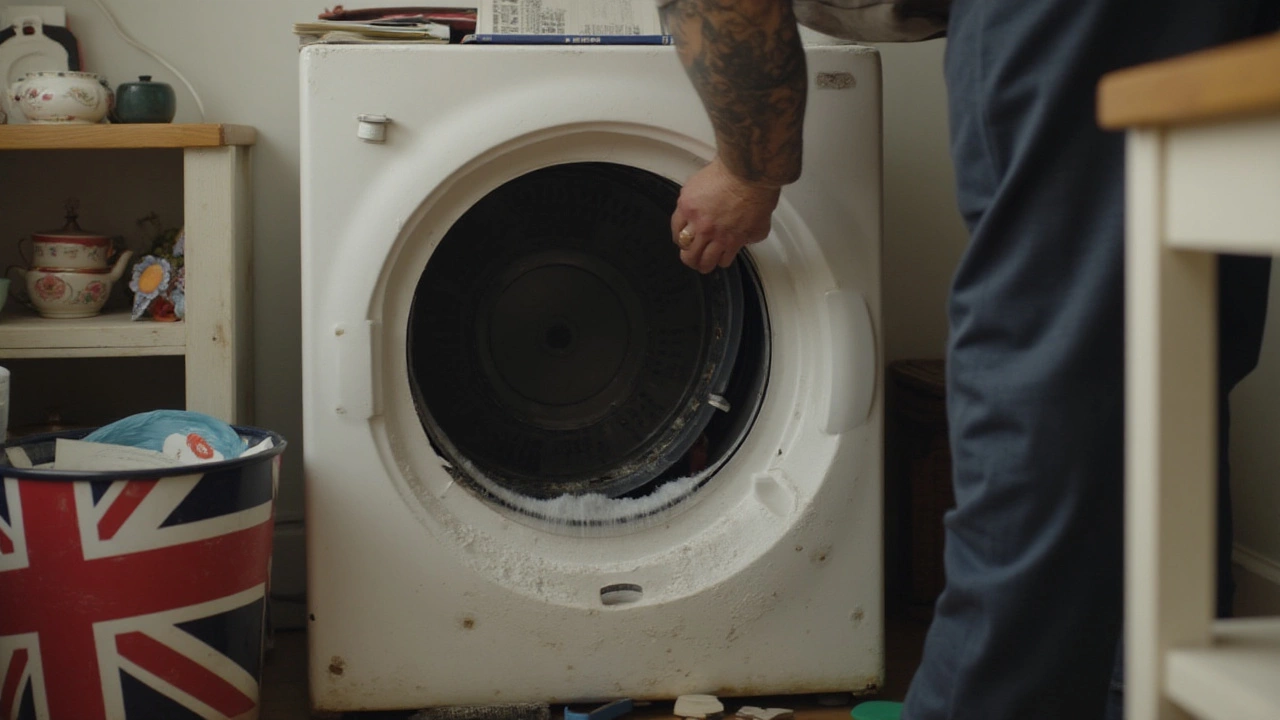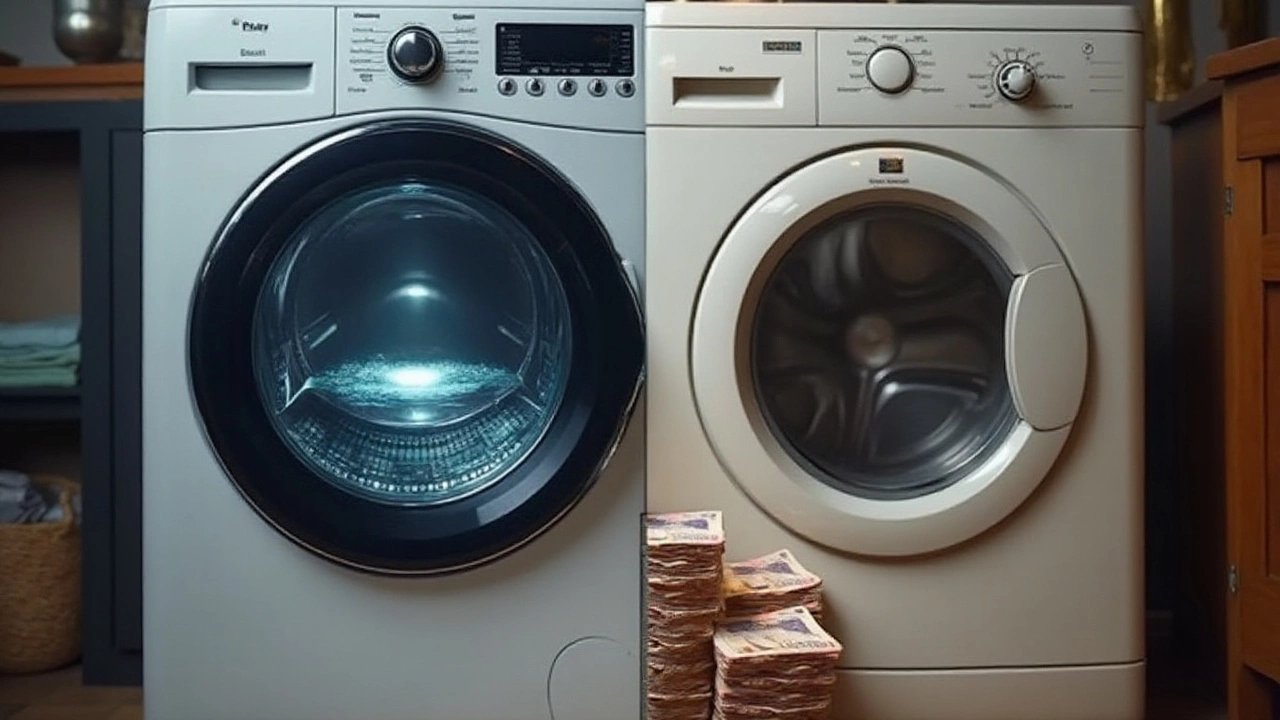When your trusty dryer approaches its tenth birthday, you might begin to ponder its fate. Is it still serving you well, or are those repair visits becoming all too frequent? This is a dilemma faced by many homeowners as appliances age.
There’s a lot to consider. The thought of buying a brand-new appliance can be both exciting and daunting, depending on one’s budget and attachment to the current machine. Moreover, assessing whether a repair is a wise investment isn’t always straightforward.
This discussion will delve into key factors such as repair costs, dryer longevity, and even a touch of DIY troubleshooting. Whether your goal is to save money or perhaps go green with energy-efficient solutions, there’s plenty to explore.
- Assessing the Condition
- Cost Considerations
- Common Issues in Older Dryers
- DIY Fixes and Alternatives
Assessing the Condition
When considering whether to repair a 10-year-old dryer, the first step is to thoroughly assess its current condition. Start by checking for obvious signs of wear and tear. Look for any rusting parts, frayed wires, or a drum that’s lost its smooth rotation. These physical signs can indicate deeper mechanical issues that may not be apparent at first glance. Listening for strange noises during operation, such as grinding or squeaking, can also give you hints about the inner workings of your appliance.
Next, consider the frequency and type of problems you've encountered with the dryer. If it's constantly overheating or under-drying clothes, it might suggest that internal components like thermostats or moisture sensors are failing. A decade-old dryer will naturally have parts that are less efficient than in its earlier years, but some issues, like clogged vents, are often easily fixable. Regular vent maintenance not only extends the life of your dryer but also keeps it running safely.
It can be helpful to consult the owner's manual for specific troubleshooting tips or common issues known for your model. If you’ve lost the manual, many manufacturers have digital copies online. Performing a self-check using these resources can help you pinpoint trouble spots and inform your conversation with a repair technician.
A less visible but equally important consideration is energy efficiency. Older dryers can consume significantly more electricity compared to newer counterparts. The Department of Energy suggests that replacing appliances that are over ten years old can lead to energy savings of up to 20%, which translates to lower utility bills over time. Checking the energy consumption of your dryer against modern efficiency standards can be eye-opening.
Understand the Cost vs. Benefit
Understanding the potential cost savings is crucial. As a respectable source, Consumer Reports suggests considering both repair and replacement under different circumstances: "If repairing the dryer will cost more than half the price of buying a new one, and it’s already acting its age, it may be time to look for a sale." Such insights can guide you whether to fix or move on. You'll want to balance the nostalgia of keeping an aging appliance with the practicality of getting a more reliable and efficient model.
An effective way to keep track of your appliance’s health is through a simple audit chart. This chart can compare repair costs over time against the estimated costs of purchasing a new dryer, factoring in potential energy savings. The challenges and costs associated with parts replacement on a dryer at this age may also depend on the model’s popularity and parts availability, which can further affect your decision.
In exploring these aspects, you are better equipped to make an informed decision about your dryer's future. Crafting a plan—whether it ends in repair or replacement—starts with assessing whether an older appliance is currently serving your needs and whether keeping it stands to benefit you in the long run.

Cost Considerations
Deciding whether to repair or replace your dryer often boils down to costs, which can be slightly overwhelming, but vitally important. Repairing a ten-year-old dryer may initially seem like the more economical choice, especially as many repairs are less expensive than replacing the whole unit. However, things aren’t always so clear-cut. For starters, the cost of repair largely depends on what exactly has gone wrong. A simple fix, such as replacing a belt or a sensor, might cost you $100 to $200, including labor fees. But if you’re looking at a malfunctioning motor or a broken heating element, the price might shoot up to $400 or more, which can give anyone pause.
Adding to the complexity, you should also consider the dryer’s future. Acknowledging that a dryer repair may only be a temporary solution is crucial. Older dryers have more wear and tear, making them prone to additional breakdowns. And while you might save money now, frequent repairs could be more expensive in the long run. It’s worth considering how often repairs have been necessary recently, as this can provide insight into potential future expenses. A dryer that has needed multiple repairs in the past year is more likely to be approaching the end of its life.
"The rule of thumb generally advised by industry professionals is if repair costs exceed 50% of the price of a new dryer, replacement may be the better choice," says Jane Mayfield, an expert at the Appliances Repair Forum.
Another layer to consider is energy efficiency. Newer dryers are built with improved technology that can lead to substantial energy savings. Based on average energy costs, switching to a new energy-efficient model could save you anywhere from 20–25% on your energy bills annually. Over time, these savings could offset the cost of a new machine, especially if your current appliance is not running as smoothly as it should. If you are someone who uses the dryer frequently, these savings can accumulate more quickly than you might expect. Sometimes, investing in a new home appliance brings additional comfort and functionality that the older model just can't match.
Consider also whether you might benefit from other features newer models offer. Many modern dryers come with smart technology, allowing you to control them from your phone or even have them adjust settings based on sensor readings to optimize drying and protect clothes. This convenience is often worth the price for busy households. Finally, it’s essential to factor in any warranties or service contracts that might have expired on your current tumble dryer. A tumble dryer lifespan exceeding ten years often means you’re on your own when it comes to covering repair costs, which can make those unexpected expenses even trickier to manage.

Common Issues in Older Dryers
When staring down the drum of a 10-year-old dryer, recognizing its common ailments can be the first step to resolution. Many users report an increase in drying time, which often points to issues like an obstructed vent or a clogged lint filter. These constraints reduce airflow, causing the appliance to work harder and longer to do the same job. Regular maintenance, like cleaning these components, can combat such inefficiencies and prolong the dryer's lifespan.
In addition to slow drying times, older dryers are prone to peculiar noises—rattles, squeaks or even grinding sounds. This can be unsettling! The culprit might be worn-out drum bearings or a frayed belt. While these fixes might not require a professional hand, accessing the internal parts does call for some dexterity and the right tools. Paying attention to unusual sounds early can prevent more significant, costly damage down the road.
Temperature fluctuation is another common nemesis with aging dryers. An appliance that runs too hot not only risks damaging clothes but also raises serious safety concerns. It’s essential to check the thermostat, heating element, and thermal fuses. Each part plays a pivotal role in regulating the dryer’s temperature. Investing in a multimeter for testing resistance can demystify potential electrical issues before they lead to a complete breakdown.
A dryer that fails to start is perhaps one of the more alarming problems. This state could indicate issues as simple as an unplugged power cord or as daunting as a faulty door switch. Sometimes, the solution involves replacing the start switch or thermal fuse. But before panicking, a quick check to ensure the circuit breaker hasn't tripped might save the day. It’s crucial to strike a balance between DIY fixes and seeking professional help when dealing with electrical components.
"Regular maintenance, even for appliances as straightforward as a dryer, can prevent commonplace problems from escalating," says appliance specialist Joe Masterson.
A vital consideration with older machines is energy consumption. According to data compiled by the US Department of Energy, older dryers can use up to 20% more energy than newer models. It's not unusual for machines that have given a decade of service to lose their efficiency edge. The gaskets and seals to can deteriorate over time, which further exacerbates the energy leakage. Consider checking these components if your dryer seems to be inflating your utility bills.
For those who love numbers and hard facts, it’s worth noting in the following table some common repair costs associated with these issues:
| Issue | Average Repair Cost |
|---|---|
| Replacing Drum Belt | $150-$200 |
| Fixing Heating Element | $250-$400 |
| Clearing Vent Obstruction | $100-$150 |
Understanding these common dryer repair issues helps not only extend the life of your appliance but also ensures its optimal performance. So, roll up your sleeves, keep that toolbox handy, and remember that regular check-ups and prompt repairs are key to avoiding the pitfalls that come with neglect and age.

DIY Fixes and Alternatives
If your 10-year-old dryer has decided to embark on a minor rebellion, don’t despair. Many issues that seem daunting can be attacked with a bit of DIY pluck. You’d be surprised at what a screwdriver and some patience can accomplish when it comes to your trusty old appliance. First, let’s tackle the mystery of the *dryer repair*. Sometimes, it's not about dismantling the whole unit but focusing on hotspots like lint traps and heating elements. If your dryer is not heating as it should, speculating on broken heating elements isn’t far-fetched. Heating elements often wear out over time, particularly around that 10-year mark. Investigating this doesn't require a full army of tools. Unplug your dryer and safely disconnect the back panel; if you spot wear or burnt-out wires, it’s likely the culprit. Plus, replacements are typically budget-friendly and widely available.
Beyond the internal tweaks, there’s the persistent battle with noise. Clangs and thuds during the drying cycle can be unnerving. Often, the suspects are worn-out drum rollers or a belt that’s seen better days. Again, these are parts you can replace relatively easily. Many guides are available online, with step-by-step videos accompanying the schematic-style diagrams. A sagging drive belt typically causes a squeaky dryer. Checking whether it’s loosely wrapped around the drum might just save you a call to the repair man. For those who love puzzles, re-securing the belt can be rather satisfying.
Before you toss in the towel, weigh in on alternatives like second-hand appliance parts stores or recycling old but working parts from other appliances in your home. Repairing versus replacing does not always have to sail into the hundreds-of-dollars territory. Admittedly, going the repair route requires a modest investment of time but can lead to great satisfaction and savings over the years. Furthermore, embracing DIY fixes aligns well with eco-friendly living. Choosing to fix rather than replace reduces the carbon footprint by salvaging yet functional appliances and diminishing e-waste. It's an environmental perspective that's gaining traction and helps save that cherished old machine from the landfill.
For those particularly interested in energy efficiency, the Energy Star program's findings could sway your decision. According to their statistics, dryers manufactured after 2015 use 20% less electricity than their older counterparts. Consider this when factoring energy savings into your decision to repair or replace. If upgrading is still on the table, there are notable advancements in technology leading to significant cuts in energy consumption. Balancing between a slight electricity bill uptick and a reasonable repair cost, the emotional attachment to your decade-old machine might just win. Or, as one seasoned appliance technician puts it, "Sometimes, fixing what's broken teaches resilience, a lesson in both machines and life."

I am an expert in the services industry with a focus on appliance repair. My passion lies in understanding how things work and educating others in simple, engaging ways. This enthusiasm fuels my writing, where I delve into topics around appliance maintenance and troubleshooting. I aim to make these subjects clear and accessible to all readers.